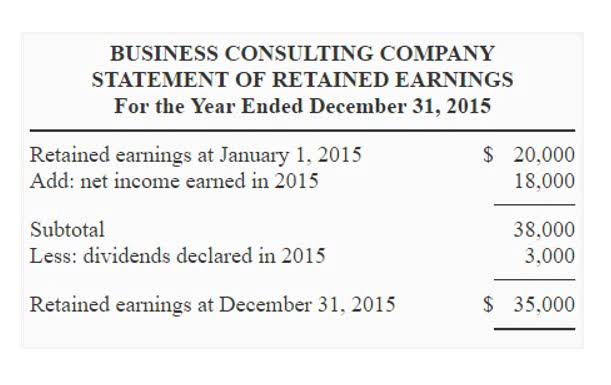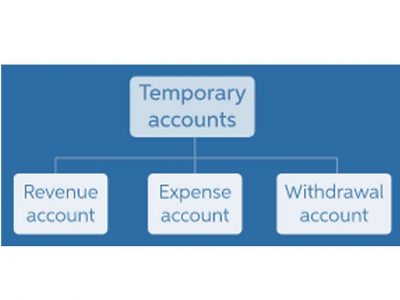Retained Earnings Formula: Definition, Formula, and Example
Shareholders, analysts and potential investors use the statement to assess a company’s profitability and dividend payout potential. Retained earnings act as a reservoir of internal financing you can use to fund growth initiatives, finance capital expenditures, repay debts, or hire new staff. It can go by other names, such as earned surplus, but whatever you call it, understanding retained earnings is crucial to running a successful business.
Your retained earnings can be useful in a variety of ways such as when estimating financial projections or creating a yearly budget for your business. However, the easiest way to create an accurate retained earnings statement is to use accounting software. The statement of retained earnings is also known as a statement of owner’s equity, an equity statement, or a statement of shareholders’ equity. Boilerplate templates of the statement of retained earnings can be found online. It is prepared in accordance with generally accepted accounting principles (GAAP). If a company has negative retained earnings, it has accumulated deficit, which means a company has more debt than earned profits.
Can retained earnings be negative?
Retained earnings make up part of the stockholder’s equity on the balance sheet. Distribution of dividends to shareholders can be in the form of cash or stock. Cash dividends represent a cash outflow and are recorded as reductions in the cash account. These reduce the size of a company’s balance sheet and asset value as the company no longer owns part of its liquid assets. Retained earnings are calculated by subtracting a company’s total dividends paid to shareholders from its net income.
As a result, any items that drive net income higher or push it lower will ultimately affect retained earnings. To find your shareholders’ equity (or owner’s equity) balance, subtract the total amount of dividends paid out from the beginning equity balance. Thus, you’ll have a crystal-clear picture of how much money your company has kept within that specific period. The accountant will also consider any changes in the company’s net assets that are not included in profits or losses (i.e., adjustments for depreciation and other non-cash items).
Beginning retained earnings and negative retained earnings
Examples of these items include sales revenue, cost of goods sold, depreciation, and other operating expenses. Non-cash items such as write-downs or impairments and stock-based compensation also affect the account. When a company has some earnings surplus, it can choose to give a portion back to its common shareholder in a form of dividends.
Once you consider all these elements, you can determine the retained earnings figure. If a company has no strong growth opportunities, investors would likely prefer to receive a dividend. Therefore, the company must balance declaring dividends and retained earnings for expansion.
How to Find Retained Earnings on Balance Sheet?
Our payments are installments of $10,000, and the first one is $8,000 in principle and $2,000 in interest (amounts made up for simplicity’s sake). Accounting terms can cause considerable confusion, and knowing the difference when keeping track of your finances is crucial for accuracy and financial literacy. A financial professional will offer guidance based on the information provided and offer a no-obligation call to better understand your situation.
Never forget that retained earnings is equity – so should not appear anywhere in the assets and liabilities parts of your balance sheet. Let’s say that in March, business continues roaring along, and you make another $10,000 in profit. Since you’re thinking of keeping that money for reinvestment in the business, you forego a cash dividend and decide to issue a 5% stock dividend instead. Retained earnings (RE) are calculated by taking the beginning balance of RE and adding net income (or loss) and then subtracting out any dividends paid. By calculating retained earnings, companies can get a snapshot of their financial health and make decisions accordingly.
Let MYOB improve your accounting operations, ensure compliance, and give you financial peace of mind while helping your business succeed. MYOB’s accounting software can help streamline bookkeeping, allowing you to focus on greater business opportunities. While a company often saves retained earnings to roll over into the new fiscal year, retained earnings can also be spent on reinvestments.
As a result, companies that retain a large portion of their profits often see their stock prices increase over time. We can find the dividends paid to shareholders in the financing section of the company’s statement of cash flows. For investors and financial analysts, retained earnings are essential since they offer in-depth insights into a company’s long-term growth potential.
What is the approximate value of your cash savings and other investments?
When lenders and investors evaluate a business, they often look beyond monthly net profit figures and focus on retained earnings. This is because retained earnings provide a more comprehensive overview of the company’s financial stability and long-term growth potential. Fortunately, for companies with at least several years of historical performance, there is a fairly simple way to gauge how well management employs retained capital. Simply compare the total amount of profit per share retained by a company over a given period of time against the change in profit per share over that same period of time. When sizing up a company’s fundamentals, investors need to look at how much capital is kept from shareholders.



Plaats een Reactie
Meepraten?Draag gerust bij!